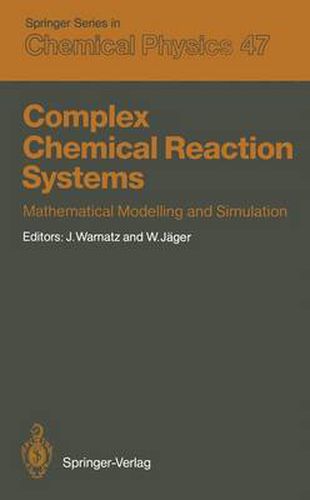Readings Newsletter
Become a Readings Member to make your shopping experience even easier.
Sign in or sign up for free!
You’re not far away from qualifying for FREE standard shipping within Australia
You’ve qualified for FREE standard shipping within Australia
The cart is loading…






This title is printed to order. This book may have been self-published. If so, we cannot guarantee the quality of the content. In the main most books will have gone through the editing process however some may not. We therefore suggest that you be aware of this before ordering this book. If in doubt check either the author or publisher’s details as we are unable to accept any returns unless they are faulty. Please contact us if you have any questions.
Chemical reaction systems of practical interest are usually very complex: They consist of a large number of elementary reactions (hundreds or thou sands in a small system), mostly with rate coefficients differing by many orders of magnitude, which leads to serious stiffness, and they are often coupled with surface reaction steps and convective or diffusive processes. Thus, the derivation of a true chemical mechanism can be extremely cumbersome. In most cases this is done by setting up reaction models which are improved step by step using, for example, perturbation theory, numerical simulation and sensitivity analysis (and - hopefully, in the near future - parameter identification procedures), and by comparison with experimental data on sensitive properties. Because of the complexity of these processes, it was very difficult in the past to convince engineers to apply methods using detailed mecha nisms given in terms of elementary reactions, and even in basic sciences there was scepticism about this ambitious aim. A previous workshop on modelling of chemical reaction systems held in 1980 was an attempt to find a common language of mathematicians, chemists, and engineers working in this interdisciplinary area. Since then considerable progress has been made by the simultaneous development of applied mathematics, an enor mous increase of computer capacity, and the development of experimental techniques in physical chemistry that have made available well-working reaction mechanisms in some fields of reaction kinetics.
$9.00 standard shipping within Australia
FREE standard shipping within Australia for orders over $100.00
Express & International shipping calculated at checkout
This title is printed to order. This book may have been self-published. If so, we cannot guarantee the quality of the content. In the main most books will have gone through the editing process however some may not. We therefore suggest that you be aware of this before ordering this book. If in doubt check either the author or publisher’s details as we are unable to accept any returns unless they are faulty. Please contact us if you have any questions.
Chemical reaction systems of practical interest are usually very complex: They consist of a large number of elementary reactions (hundreds or thou sands in a small system), mostly with rate coefficients differing by many orders of magnitude, which leads to serious stiffness, and they are often coupled with surface reaction steps and convective or diffusive processes. Thus, the derivation of a true chemical mechanism can be extremely cumbersome. In most cases this is done by setting up reaction models which are improved step by step using, for example, perturbation theory, numerical simulation and sensitivity analysis (and - hopefully, in the near future - parameter identification procedures), and by comparison with experimental data on sensitive properties. Because of the complexity of these processes, it was very difficult in the past to convince engineers to apply methods using detailed mecha nisms given in terms of elementary reactions, and even in basic sciences there was scepticism about this ambitious aim. A previous workshop on modelling of chemical reaction systems held in 1980 was an attempt to find a common language of mathematicians, chemists, and engineers working in this interdisciplinary area. Since then considerable progress has been made by the simultaneous development of applied mathematics, an enor mous increase of computer capacity, and the development of experimental techniques in physical chemistry that have made available well-working reaction mechanisms in some fields of reaction kinetics.